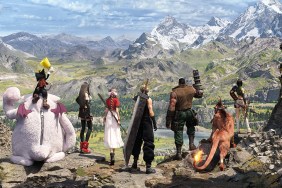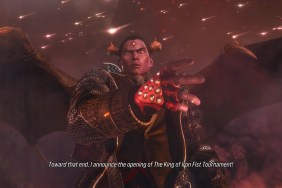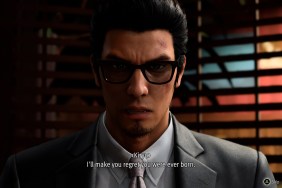Freedom is not worth having if it does not include the freedom to make mistakes.
Sun Wukong, The Monkey King, possesses incredible strength, carries a staff that can change in size and weighs at least 17 tons, can travel more than 33,000 miles in a single somersault through cloud-traveling, and has been a classical mythical hero in ancient Chinese lore ever since the Ming Dynasty in the 1590s. In Journey to the West, one of the Four Great Classical Novels of Chinese literature, he helps escort a monk named Guanyin who is only able to control Sun Wukong by way of a magical headband that would cause excruciating pain through a magical chant, if ever the Monkey King were to misbehave. After joining with other characters like “Pigsy” and going through eighty-one tribulations, Sun Wukong is bestowed with Buddhahood for his success as a bodyguard and hero.
[image1]Such is the inspiration behind both Dragon Ball and Enslaved: Odyssey to the West, whose central protagonist – if the title doesn’t make the inspiration obvious enough – is dubbed Monkey. As a modern video game protagonist, he’s probably the gruffest interpretation of The Monkey King yet. He is a shirtless, self-proclaimed loner who was raised in the wild, speaks in a dangerously low voice, and has such a muscular neck that he hunches forward when he stands. He may not be able to jump across continents or cast magical spells, but he does wield an extendable staff, can turn his staff into a plasma blaster upon his shoulder, can surf on top of water using a Cloud disc, has incredible climbing prowess, and wears a long yellow cloth dangling out of his extremely well-fitted pants in lieu of a tail.
Unfortunately, none of his skills and tracks prevents him from being captured by a technologically advanced slave ship. But as he looks out the window of his metal, cocoon-like prison, he sees a woman who has seemingly escaped and overloaded the ship’s power grid. The resulting explosions allow him to break out, recover his weapons, and escape while hanging onto a launched pod with the girl inside. The impact with the ground, though, knocks him unconscious. When he awakens, he finds a golden slave headband grafted above his brow and hacked by the bitch young woman Trip, who can control him through verbal commands and whose death will trigger his death as well. This, all so she can survive the journey home by forcing Monkey to protect her through the mech-filled wasteland.
As the title would suggest, freedom and enslavement act as pivot points throughout the 14-hour story and relate to each other in surprising ways. Without the golden headband, Monkey would remain a bestial survivalist consumed with power, just like The Monkey King before his journey; with it, he must learn the virtues of trust, responsibility, and sacrifice. The journey of Monkey and Trip, of a badass loner becoming a sociable, emotionally mature human being through a female figure, is hardly unique in gaming, but here, it’s tilted and developed enough to keep the story and dialogue interesting.
Where the plot falters is the beginning and the ending. Apart from the comic, Monkey and Trip are not given any background story or any setup as to how they arrive on the slave ship. This lack of a “fall from heaven” makes it difficult to root for the protagonists apart from their physical survival and misses the opportunity to flesh out the daily lives of the human race in this post-apocalyptic world before being killed or enslaved by the mechs. In fact, telling the origins of how Monkey came to be would have been the most interesting part of the story, especially since most people in the West (ironically?) don’t know who Sun Wukong is.
[image2]The ending, on a similar note, feels too abrupt and farfetched in concept, though it’s tied to the white masks that Monkey finds throughout his journey. It all has something to do with a pyramid and memories and dreams and religious connotations. Halfway through the epilogue, I expected Keanu Reeves to come flying in and teach me kung fu. Perhaps the only good part about the ending is that it draws out the question of whether complete enslavement or loss of free will can be the vehicle for human salvation. Certainly something to ponder if nothing else.
But the real “story” of Enslaved is its setting: a lush and vibrant grove where nature has reclaimed the ruins of mankind. Vivid greens, blues, and reds – the primary colors of light – fill the landscape with deep contrast. Ivy and moss smother the dilapidated skyscrapers of New York City in a thin blanket of silence. The fallen remains of the Brooklyn Bridge meld into the shoreline of the Hudson River. Apart from a few butterflies, no animals remain, perhaps hiding from the mechs that rest inactive, ever ready to awaken from their slumber.
For as original as the story and setting are, however, the action is not as innovative. Taken as hybrid of genres, it’s interesting, but that alone is not enough to create depth. Without enough focus on each individual component, the combat becomes a jack of all trades and master of none.
Stringing together combos with the staff and gauntlets is satisfying, but you’ll end up only using three attacks at most with perhaps some evasion in between. It also doesn’t help that about three quarters of all your enemies are mechs that despite their variations – some have shields, some have malfunctions, and some have combo strings of their own – are all the same color and of the same size. Sneaking past enemies is a viable option, but when killing enemies awards you red Tech orbs, why even bother?
Gunplay is rudimentary and only gives Monkey the option between standard ammo and stun blasts that are primarily and almost exclusively used to disable a mech’s shields. Camera angles sometimes get in the way and there’s no way to lock onto a specific enemy. Climbing from one highlighted pole, ledge, or brick to the next certainly borrows from Uncharted 2, but the controls are less responsive and climbing isn’t challenging until the last two levels. On top of that, the sound design can be inconsistent, muting explosions and effects that shouldn’t be silenced at all.
[image3]With the exception of a few boss battles, the level design is chopped into chunks and lacks seamless transitions, as if you’re playing “the climbing part”, “the Cloud part”, or “the gunplay part” instead of one continuous world with freeform objectives. This is relatively minor issue, though, compared to the checkpoint system. It takes about ten seconds of reload time to start a section over, usually from a checkpoint further back than you expected. Suffice it to say, racing through a field of one-hit-killing mines on a hoverboard probably is unnecessarily frustrating.
The only rewards for exploration are red Tech orbs and some white masks that don’t really matter. Just the desire to explore is hampered by the constrictive environments and Trip’s insecurity that makes you feel tethered to her (placenta) at all times. If Monkey strays too far away from his mother her, she’ll just off him in cold blood, which means she thinks it’s better to kill Monkey than to just set him free. Yeah, that girl’s a keeper…
Despite her questionable ethics, though, Trip’s not entirely defenseless. She may have trouble hanging onto a ledge, but she can activate an EMP blast if she gets surrounded by mechs, heal Monkey by using a health vial, and send out a decoy that distracts turrets and redirects enemy fire. To return the favor, you can distract enemies by shouting “Hey!” so that Trip can get to cover safely as well, but let’s not forget that you Tarzan and she Jane. Either way, the partner work is easily the most original mix in the bag.
Enslaved: Journey to the West travels to that strange land of games that you’ll likely finish in spite of its lack of refinement. The simple, albeit underdeveloped, combination of gameplay styles is brisk enough to carry the inspiration behind its characters, setting, and story. Nothing is flat-out broken or terribly executed, only average at worst. It’s the kind of game where you want to forgive its hunched blunders because it’s a breath of fresh air and something worth remembering. If nothing else, Enslaved deserves a rental, a pat on the head, and a bunch of semi-ripe bananas.
-
Compelling inspiration
-
Innovative characters and story
-
...except for the beginning and end
-
Gorgeous, original setting
-
Strong animations and voice-work
-
Simple but underdeveloped gameplay
-
Sparse checkpoint system and one-hit kills
-
Touchy controls











